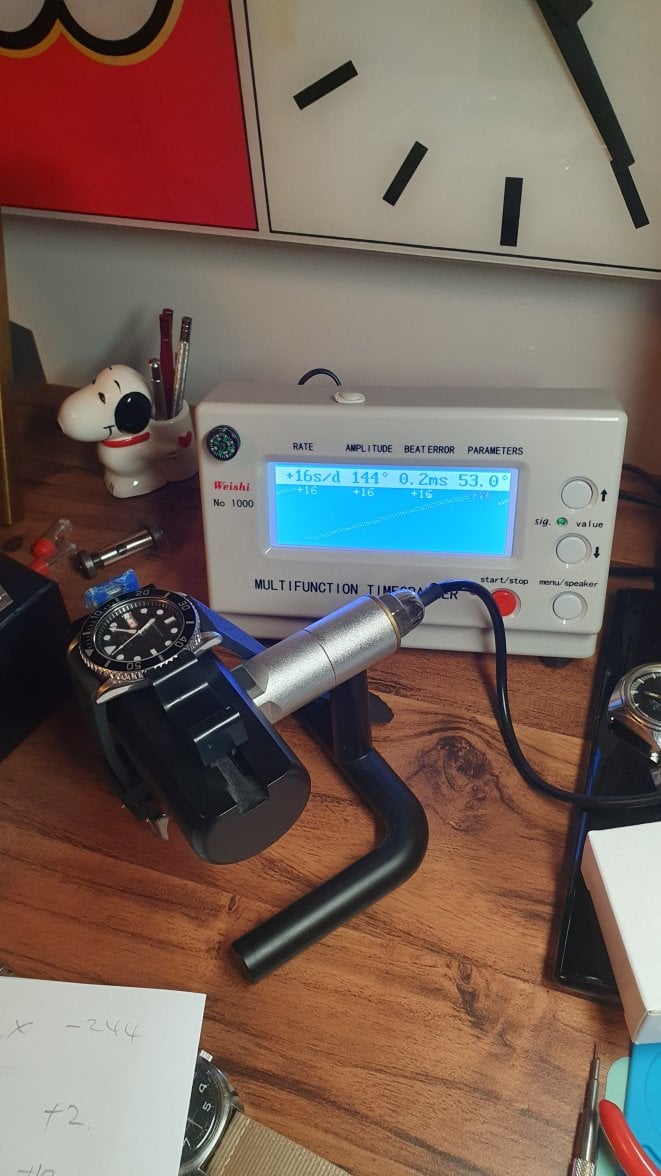This thread piqued my interest so I decided I'd rerun
@Aroxx experiment on a 7S26 using a timegrapher to check the amplitude along the way and hey why not share the results, so hold onto your hats chaps this could get boring.
I use the wine glass swirl winding technique that produces about 3 swirls a second and checked the amplitude every minute, unfortunately I didn't have any speedmasters lying about to help perform this task
🙁 but managed to muddle through.
A quick check after 30 seconds of swirling the display is a garbled mess, 253 amp with 3.2 beat error and -244 seconds, onwards. 1 minute in it's 149 amp with nice 0 beat error, 2mins-187, 3-204 (the rotor seemed to have a bit more resistance now so I swirled with a bit more vigor) 4-234. At 5 minutes the movement maxed at 278 and the beat error moved to 0.2 before settling to 251 and all flat, one more 30 second swirl for luck and pretty much the same result, 252. That will do, now to see how long it runs...
If any brave hearts are still here I decided to keep an eye on its unwinding, don't worry it will not be every minute.
After 24 hours the amplitude had dropped to 201 a 20% loss with beat error holding steady - at 36 hours it's down to 169 so a total 33% loss so far, beat error has now slipped to 0.1 (exciting stuff huh?) Official power reserve of 41 hours done! with 144 amp another 10% drop BE now 0.2 - 43 hours in it's now below 50% at 121 and BE at 0.4 but still keeping fairly decent time, it staggers on for another 2 and a bit hours. Not bad.
Action photo as we pass 41 hours (courtesy of Mrs Leeroy)
So a 7S26 can be fully wound in 5 minutes but I really don't think this is the healthiest way to wind a watch, a rotor whizzing around 500+ times could spell disaster, I'd give it a gentle shake for up to a minute and then pay heed to the sage words of
@Canuck "just wear it for goodness sake!" Personality I use one of these:
He makes sure my automatics are fully wound.





